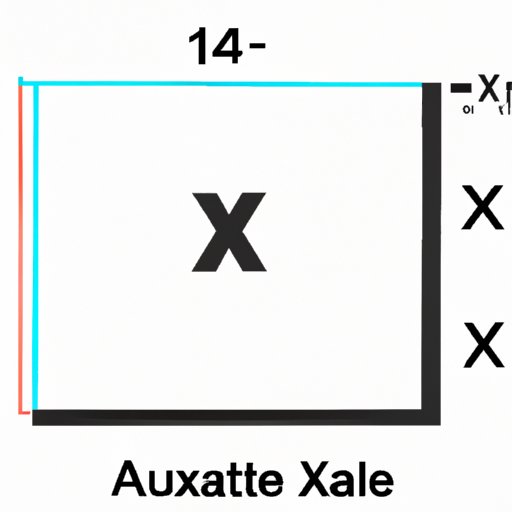Introduction
Calculating the area of a rectangle is a fundamental mathematical concept that can easily be applied to everyday scenarios. Knowing how to calculate the area of a rectangle can help you measure the size of a room, calculate the amount of material needed for a project, or even figure out how much paint is needed to paint a wall. This article will provide an overview of how to calculate the area of a rectangle using different methods such as formulas, multiplication, visual representations, and online calculators.
Utilizing the Formula
The most common way to calculate the area of a rectangle is by utilizing the formula A = lw, where A is the area, l is the length, and w is the width. To use this formula, simply multiply the length and width together. For example, if the length of a rectangle is 10 cm and the width is 5 cm, then the area of the rectangle would be 50 cm2.
Drawing a Diagram
Another way to calculate the area of a rectangle is to draw a diagram of the rectangle and label the length and width. This method can be especially helpful if you are dealing with more complex shapes. After drawing the diagram, you can measure the length and width and then multiply them together to get the area of the rectangle.
Using Multiplication
The most straightforward way to calculate the area of a rectangle is to simply multiply the length and width together. This method is easy to remember and requires no special knowledge or tools. All you need to do is find the length and width of the rectangle and then multiply them together. For instance, if the length of a rectangle is 10 cm and the width is 5 cm, then the area of the rectangle would be 50 cm2.
Online Calculators
If you need to quickly find the area of a rectangle, an online calculator can be a great resource. There are many free online calculators available that can easily calculate the area of a rectangle. All you have to do is enter the length and width of the rectangle and the calculator will do the rest. Using an online calculator is a great way to save time and make sure your calculations are accurate.
Breaking Down Area
If you are having trouble understanding how to calculate the area of a rectangle, you can break down the area into smaller components. For instance, if you have a rectangle that is 12 cm by 6 cm, you can break it down into four separate rectangles that are each 3 cm by 6 cm. By breaking down the area into smaller components, you can easily calculate the area of each rectangle and then add them together to get the total area of the original rectangle.
Visual Representations
Using visual representations such as drawings or diagrams can be helpful when trying to understand how to calculate the area of a rectangle. Drawing a diagram of a rectangle and labeling the length and width can help you visualize how to calculate the area. Additionally, using pictures or diagrams can help you better understand the concept of calculating the area of a rectangle.
Practice Problems
In order to fully understand how to calculate the area of a rectangle, it is important to practice. You can find practice problems online or in math textbooks. Working through practice problems will help you understand how to use the formula, draw diagrams, and utilize multiplication to calculate the area of a rectangle. With enough practice, you will be able to quickly and accurately calculate the area of any rectangle.
Conclusion
Calculating the area of a rectangle is a fundamental mathematical concept that can easily be applied to everyday scenarios. This article provided an overview of how to calculate the area of a rectangle using different methods such as formulas, multiplication, visual representations, and online calculators. With enough practice, you will be able to quickly and accurately calculate the area of any rectangle.
(Note: Is this article not meeting your expectations? Do you have knowledge or insights to share? Unlock new opportunities and expand your reach by joining our authors team. Click Registration to join us and share your expertise with our readers.)
